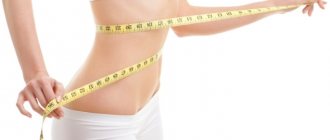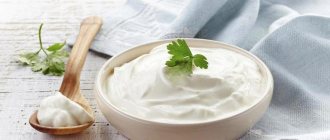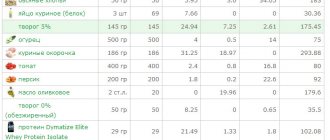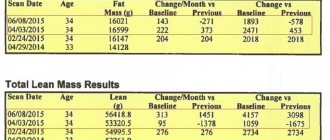What is body fat percentage?
Body fat percentage is your total weight minus your body fat weight.
For example, if you weigh 68 kg and your body fat is 6.8 kg, then your body fat percentage is 10% (6.8/68).
This percentage changes as you gain or lose fat. Of course, this percentage also changes when you gain muscle or lose muscle mass.
If you used proper nutrition and strength training to increase your weight from 68 to 78 kg, for example, and gained another 2.2 kg of fat, then your new body fat percentage would be about 12% (9/78).
If you then stopped exercising and lost, say, 10 pounds of muscle mass rather than fat, your body fat percentage would still be around 12% (9/73.5).
Thus, your body fat percentage fluctuates as you change your constitution.
Why is calculating body fat percentage more important than calculating body mass index?
Many people confuse body fat and body mass index, but they are two completely different concepts.
BMI stands for “body mass index,” and this number is a ratio of weight to height.
You can calculate your BMI by dividing your weight in kilograms by your height in meters.
- For example, here is my BMI:
- 184 (lbs) x 0.45 = 82.8 (kg)
- 74 (inches) x 0.025 = 1.85 (m)
- 1.85 x 1.85 = 3.4225
- 82.8 / 3.4225 = 24.2 (BMI)
Here's how BMI values correlate with body weight status:
- Reduced = <18.5
- Normal weight = 18.5-24.9
- Overweight = 25-29.9
- Obesity = BMI 30 or more
As you can see, according to my BMI measurement, I was borderline overweight.
Strange, isn't it?
Well, that's the problem with BMI: it's useful for analyzing broad populations, but not as useful for individual assessments of physical development.
BMI is useful for analyzing broad populations, but not for individual assessment of physical development.
Calculating body fat percentage is much better for these purposes.
How is body fat percentage different from body mass index?
The effect of a diet or exercise program can only be verified when you have accurate biometric data. This web page will help you calculate your Body Mass Index (BMI), body fat percentage and lean body mass.
You will also receive an estimate of your daily calories and protein needs at your activity level. Once a week you should record your measurements to monitor your results.
If you keep your data on a spreadsheet (eg MS Excel), you will be able to create charts to make it easier to see trends.
To maintain a sustainable weight, the number of calories in our diet must be equal to the number of calories we expend through activity, excrete as waste, or use to regenerate skin, hair, nails and other body tissues.
To lose weight, we must eat fewer calories than our body requires, so that the fat that is in our body is used and makes up for the missing part of the calories we need. Before starting any diet, you should consult your doctor or nutritionist, especially if you are taking medications.
How to take measurements
The body requires protein to maintain muscles and produce hormones. Essential fatty acids are needed for cell replication and to maintain the structure of the nervous system. Therefore, any reduction in calories should be accomplished by reducing the amount of saturated fat and carbohydrates.
note
Read more: Synthol and its use by bodybuilders
The diet should always provide sufficient amounts of essential fatty acids and protein. The body requires at least 15 grams of essential fatty acids per day, which are found in meat, fish, and nuts. A very low calorie diet (less than 1,300 calories per day) usually does not provide all the nutrients needed for good health.
Percentage of fat by circumference of body parts. Using the proposed form, the daily protein requirement, Body Mass Index (BMI), waist-to-height ratio and percentage of body fat are calculated. These metrics also help you track your healing progress. Measurements should be accurate to the nearest 0.5 cm or 1/4 inch. Measurements should be taken so that the tape is tensioned, but does not compress the skin.
How to measure
- Height - measure without shoes
- Weight - You need to weigh yourself in the morning, after visiting the toilet, on an empty stomach, without clothes.
- Waist (Men) - measure horizontally, at the level of the navel (Women) - measure horizontally, at the level of the minimum width of the abdominal cavity
- Neck - Neck circumference is measured by placing a tape around the neck horizontally under the Adam's apple.
- Hips (Women) - The largest horizontal circumference around the hips.
Activity level
- Sedentary - Passive activities, watching TV, working on the computer, reading
- Moderate activity - One hour a day walking, swimming, jogging, tennis
- Vigorous activity - Two or more hours a day of exercise or rearranging furniture
Enter your height, weight and other information, then click the Calculate button.
Create a link to this web page from your blog or web page.
Simply copy the following HTML snippet into your blog or web page and a hyperlink will be created using the following Diet Calculator icon
- Body Mass Index (BMI) - The ratio of weight to height is measured in kg/m2 and is calculated using the formula:
BMI = m/h2where: m - body weight in kilograms, h - height in meters
In general, BMI is small for thin people and large for fat people. People with a BMI of 25 or more are considered overweight unless their body is very muscular. BMI does not look at the amount of body fat or muscle mass. BMI may classify a thin, muscular person as overweight. This is a known flaw in the BMI formula. If your BMI is 25 or greater, your waist-to-height ratio is less than 0.5, and your body fat percentage is in the "athlete" or "average" range, you are probably muscular rather than fat.
Underweight BMI {amp}lt; 18.5 Normal body weight BMI 18.5 – 24.9 Excess body weight BMI 25-29.9 Obesity BMI ≥ 30 BMI=36.6
BMI=41.4
BMI cannot determine how weight is distributed.
Typical Body Shapes According to Body Mass Index
- Waist-to-Height Ratio - A waist-to-height ratio of 0.5 or greater indicates an increased amount of abdominal fat for both men and women. Abdominal fat increases the risk of cardiovascular disease.
- Body fat percentage - calculated using formulas for the body circumference method developed by Hodgdon and Beckett.[6] Men and women require different measurement methods because men tend to store fat around their belly (apple shape) and women tend to store fat around their belly and hips (pear shape). Formula for men:%Fat=495/(1.0324-0.19077(log(Waist-Neck)) 0.15456(log(Height)))-450 Formula for women:%Fat=495/(1.29579-0.35004(log(Waist-Hip- Neck)) 0.22100(log(Height)))-450 Body fat percentage
Body fat level women men Substantial fat 10-12% 2-4% Athletes 14-20% 6-13% Average 21-24% 14-17% Acceptable 25-31% 18-25% Fat ≥ 32% ≥ 26% - Lean body mass (Fat Free Mass) - calculated by subtracting body fat weight from total body weight. Lean body mass = Weight × (100 - Body Fat Percentage)
- Daily Calorie Requirement - Minimum daily calorie requirements are calculated by height and sex using Institute of Medicine recommendations.[2] When the BMI is 25 or greater, the calculator reduces the minimum calorie intake by 15% to produce a diet that can be maintained by healthy people for many months without adverse effects.
- Grams of Protein per Day - Calculated from maximum normal BMI, height, and activity level. The recommended amount of protein is 0.8 grams per kilogram of body weight for low levels of activity, 1.1 grams for moderate activity, and 1.4 grams for vigorous activity. Other components of the diet, including essential fatty acids and carbohydrates, must be balanced to provide the minimum required calories per day. Any diet should always include at least a minimum amount of protein to prevent muscle loss when caloric intake is reduced. A typical high protein diet contains 30% calories from protein, 30% from fat, and 40% from carbohydrates. The following table shows the percentages of nutrients for the 2000 and 1800 calorie diets.
High Protein Diet
| Squirrels | Fats | Carbohydrates | |
| Calories | 30% | 30% | 40% |
| 2000 | 600 cal | 600 cal | 800 cal |
| 150 g | 67 g | 200 g |
Low-carbohydrate diet for weight control
| Squirrels | Fats | Carbohydrates | |
| Calories | 25% | 65% | 10% |
| 2000 | 500 cal | 1300 cal | 200 cal |
| 125 g | 144 g | 50 g | |
| 1800 | 450 cal | 1170 cal | 180 cal |
| 113 g | 130 g | 45 g |
US Government Diet
Read more: Exercises with dumbbells for women to lose weight at home
| Squirrels | Fats | Carbohydrates | |
| Calories | 15% | 30% | 55% |
| 2000 | 300 cal | 600 cal | 1100 cal |
| 75 g | 67 g | 275 g |
Use the Macronutrient Calculator to Customize Your Diet
Bibliography:
- Harvard School of Public Health - Nutrition Source. Provides information regarding diet and nutrition
- Dietary Reference Intakes for Energy, Carbohydrate, Fiber, Fat, Fatty Acids, Cholesterol, Protein, and Amino Acids (Macronutrients) (2002). A book about nutrition and health.
- Michael R. Eades, MD, and Mary Dan Eades, MD, “Protein Power,” Bantam Books, 1996. Describes a low-fat diet that has had great clinical success in reducing obesity and normalizing insulin levels.
- Barry Sears, Bill Lawren, “The Zone: A Dietary Road Map to Lose Weight Permanently,” ReganBook, 1995. Recommends a diet of 40% carbohydrates, 30% protein, and 30% fat.
- S. D. Hsieh, H. Yoshinaga, T. Muto, Int.
J. Obes. Relat. Metab. Disord., 2003 May;27(5):610-6. Waist-to-height ratio, a simple and practical index for assessing central fat distribution and metabolic risk in Japanese men and women. - J. Hodgdon, and M. Beckett, “Prediction of percent body fat for US Navy men and women from body circumferences and height.”
Reports No. 84-29 and 84-11. Naval Health Research Center, San Diego, Cal. 1984.
You probably know that the higher the percentage of fat in the body, the worse it looks. People of the same weight can look different depending on the percentage of fat - and therefore muscle.
When losing weight, it is the percentage of fat that needs to be reduced - this is why starvation diets, which waste muscle and water, are dangerous. Unfortunately, even with the most reasonable diet, on average, for every 3 kilograms of fat lost, there is 1 kg of muscle and water.
BMI takes into account your weight and height and, based on this data, decides whether you are thin, slim or plump. Body mass index does not correlate with body fat percentage. BMI doesn’t matter what your 90 kg consists of: meat or buns.
However, BMI is useful in order to draw attention to the problem. If you are over 30% body fat, both your BMI and body fat percentage will indicate that it is time to lose weight.
Normal percentage of body fat in women and men
Body fat is actually the dreaded layer of subcutaneous fat.
It plays vital roles in the body, including protecting organs from damage, maintaining body temperature, producing hormones and other chemicals, and much more.
This is why there is a limit to how thin you can be before you start having health problems.
What does this limit mean?
Below are the body fat ranges and their classification for both men and women:
| CLASSIFICATION | MEN | WOMEN |
| Essential fats | 2 – 4% | 9 – 11% |
| Sports fats | 6 – 13% | 14 – 20% |
| Healthy fats | 14 – 17% | 21 – 24% |
| Normal fats | 18 – 25% | 25 – 31% |
| Obesity | 26%+ | 32%+ |
Unless you are a competitive athlete, you should not try to achieve extremely low body fat levels. If you try to greatly reduce your fat percentage, your body will suffer, including your internal organs, and the road to recovery may be very long.
The lower level of body fat allows you to achieve muscle cross-section. This is exactly what people look like at this stage. Anyone can achieve good health with proper diet and exercise, but it is very difficult to maintain this state for a long period of time.
Maintaining this condition requires strict control of calorie intake, which can be especially difficult if you struggle with your natural constitution.
Healthy fats look healthy and athletic, but there is a lack of definition of the lower level of a given body fat.
I generally recommend staying within the healthy fat range. This slows down muscle growth and makes subsequent activities long and grueling.
The middle range of normal fats is the stage when you become “overweight” and health problems may begin.
If you want to feel good and reduce your risk of chronic disease, then don't accumulate these fats.
Why do you need to know your fat percentage?
The main action of every person losing weight is to get rid of fat, but many make the mistake of losing weight along with muscles. Even if you adhere to proper nutrition, with a lost kilogram of fat you will lose 300 grams of muscle mass.
Important! Muscle is much heavier than fat, which means two people of the same height and weight will have different body shapes.
A minimum percentage of fat and a maximum percentage of muscle create a sculpted and athletic body. The female sex, due to physiological characteristics, has more fat cells, which is why it is more difficult for them to get their body in order.
Those who want to lose weight need to keep records by measuring their subcutaneous fat percentage every two weeks. This will contribute not only to weight loss, but also to competent improvement of body structure.
The normal fat percentage for females is 20-25%, for males the figure is 9-17%. Athletes want to have minimum numbers, but for physically unprepared people, having low numbers can have unpleasant consequences.
How to calculate your body fat percentage?
There are quite a few ways to calculate body fat percentage, and you can get quite a few different results.
In my case, the test showed 11%, but the portable device showed 8%, and the other device showed 6%.
Where is the truth?
Scales that calculate your body fat percentage
The easiest way to measure your body fat percentage is with a scale or handheld device.
These devices use the bioelectrical impedance (BI) method, which involves measuring your body's resistance to light electrical current.
Muscle conducts electricity well because it is 70% water, but fat is a poor conductor because it contains much less water. Thus, in order for your body to be more resistant to electrical current, it must contain more fat. This sounds reasonable enough, but there are serious problems with BI...
Electricity will follow the path of least resistance.
When current passes through your body, fat deposits in the tissues are not retained. (Inner fabrics are used for this, for example).
What's even worse is that the two electrode devices (like most similar devices) allow parts of your body to pass through.
Foot scales pass through the entire torso, while hand-held devices pass through the lower part of your body.
As far as you understand, all this distorts the results.
Another problem is that the bioelectrical impedance method uses mathematical equations to turn raw readings into body fat percentages, and these equations can be fundamentally flawed.
You see, when a company develops a device like this, they calibrate it using another imperfect method of measuring body thickness: hydrostatic weighing.
There are several stages:
- Measuring the fat of a large group of people using the "steering" method.
- Measuring people using the bioelectrical impedance method.
- Comparison of readings.
- Development of an equation to predict the results of the bioelectrical impedance method based on height, weight, gender and other variables.
This might work if the method's readings were accurate, but often this is not the case.
That is, many companies calibrate their devices to avoid incorrect calculations of body fat percentage.
Hydrostatic weighing is the most commonly used, and studies show that the error can be as much as 6% for various reasons related to ethnicity, body weight, hydration status, and more.
If a 6% error doesn't sound too bad to you, then the errors I'm talking about in this article are negligible to you.
In other words, someone might get 10% body fat on one device, but might get 16% by hydrostatic weighing.
The condition of the body can significantly influence the results.
Test your body fat percentage using the bioelectrical impedance method when you are dehydrated and the results are extremely accurate due to its low conductivity.
Check your fat percentage after eating and you'll see the opposite effect. In this case, the error will be large. (In one study, readings varied by 4.2%.)
Research shows that the body is more conductive after exercise, so if you take a test after exercise, you will get an underestimated reading.
These are some of the reasons why scientists decided that bioelectrical impedance devices were not suitable for accurately estimating body fat percentage.
What about using one device to track changes in fat tissue over time?
If a bioelectrical impedance device consistently produces inaccurate results, then it will work, right?
Of course... but there is one thing.
The readings won't always be accurate because they are affected by too many things you can't control, rendering these devices useless.
Caliper for measuring fat folds
Body fat measurement uses a device that measures the thickness of your skin in different places on your body.
The measurements are added together and run through a pair of equations that ultimately give you your body fat percentage.
You probably already understand what can go wrong.
Namely, if you pinch too little skin, the readings will be lower than they actually are. If on the contrary, the indicators will be overestimated.
Unfortunately, pinching the required amount of skin does not guarantee that the results will be accurate. This is due to the inaccuracy of the equations.
In one study, testing showed an average result of 6%, with measurements in some areas reaching 10% or being 15% lower than actual values.
In another study, testing showed results that ranged from 5% minus to 3% plus. This study on bodybuilders demonstrated similar error rates.
The benefit of this type of testing is that the methods used are more accurate than others and can be tracked well across different areas of body fat over time.
We'll talk about this later.
Photos and reflections
This is the easiest way to determine your body fat percentage.
Most people with the same percentage of body fat look the same... as long as they have the same amount of muscle.
If not, the same body fat percentage can look completely different on people with different body types.
For example, a 160-pound guy at 10% body fat has 16 pounds of fat, and a 190-pound guy at 10% has only 3 pounds more fat but quite a bit more muscle. However, the view is completely different.
Visually it looks like this:
Both guys have about 10% body fat, but the one on the left has 20 to 25 pounds of muscle mass compared to the guy on the right.
Now, if you are still reading this article, then you have a good chance to start exercising and build muscle.
In this case, the following images will help you estimate your approximate body fat percentage.
Fat content in men
As you can see, desirable abs are achieved at 10% body fat, blood vessels become visible at 8%, and defined muscles are achieved at 6% or less.
Fat content in women
The extra fat that women carry in their breasts, thighs and buttocks refers to fat that is outside the range of body fat.
As you can see, 10% fat in men and 10% fat in women differ in appearance.
Dual-energy X-ray absorptiometry (DXA)
DEXA uses x-rays of the entire body to help calculate your body fat percentage.
The scientific basis of this method is the following: fat and fat-free mass absorb X-rays differently, which allows each element to be isolated and measured.
One would assume that this method would be very accurate, and in fact many people believe that DEXA readings are infallible, but research shows otherwise.
They can be just as inaccurate as with any of the other methods we've already discussed.
For example, in these two studies, individual error rates using DXA were 4% higher. In another DXA study, the error was 8 to 10%.
This helps explain why many bodybuilders have gained between 6 and 10% as a result of DXA.
Imagine! Is DXA the gold standard for calculating body fat? Think again...
There are several reasons why DEXA may fail.
- Results may vary between devices.
- Accuracy depends on gender, body size, weight.
- Different devices use different algorithms to interpret raw data from body scans.
- The type of X-ray used affects the accuracy of the test.
- The level of water content during scanning can significantly affect the results.
So, like other methods such as bioelectrical impedance and skinfold measurements, DXA can give an accurate estimate of your body fat, but it can also be quite skewed.
Bod Pod
A Bod Pod is a machine that works similar to a hydrostatic weighing device, but uses air instead of water.
You sit in a sealed chamber and sensors measure the amount of air that comes from your body. Mathematical formulas are then used to obtain readings.
We already know how inaccurate hydrostatic weighing devices are, and unfortunately the Bod Pod can be even worse.
Its accuracy depends on several variables, such as facial hair, humidity, body temperature, and even the tightness of clothing.
In one study, Bod Pod readings were as much as 15% higher. Error rates of 5 to 6% have been seen in other studies.
I've met dozens of people whose Bod Pod readings were double their actual body fat percentage (it doesn't take an expert to figure out that a person has 10% body fat, not 20%).
What a man needs to know before starting to lose weight
Extra pounds are not only unattractive, but also dangerous to health, for example, heart and vascular diseases can develop.
Basic rules for losing weight for men
Here is a list of mistakes that many men make when following their eating habits:
- They eat a lot. Boys are taught from childhood to eat a lot in order to grow big and strong. Therefore, if satiety has arrived, and there is still food left on the plate, you need to use your willpower to refuse to continue the meal.
- Need a lot of calories. This myth encourages a man to eat dumplings, lard, fatty meat, white bread with mayonnaise, neglecting steamed fish and vegetables, since the latter do not satiate as quickly as the dishes listed at the beginning.
- Snacks while watching TV or computer. The amount of food eaten at one time can be even more than a full lunch or dinner. There is no sense of proportion in this case, since the screen absorbs all attention.
- Alcohol. Many men who have grown a beer belly don’t even think that a bottle of beer after work is a big minus for the body, because alcohol increases appetite, reducing the feeling of fullness. Therefore, together with alcoholic drinks, you can absorb a lot of food, and with it, calories. In addition, no one has canceled the calorie content of alcohol consumed.
- Sports exercises will relieve excess weight. If at the same time you eat up, adhering to the four points above, then sports will not help in the fight against the stomach. You need to combine sports activities and proper nutrition.
Important! Only a combination of dietary nutrition and sports exercises will help you get rid of extra pounds.
The percentage of fat in a man’s body depends on what goals the guy sets for himself.
Important! The minimum amount of fat should not be lower than 2%.
Bodybuilders who are preparing for competitions have 3-4% body fat. In this case, almost all muscles are covered with protruding veins, which indicates a very thin layer of fat cells. But the bar cannot be lowered below 2%, since otherwise the organs in the abdominal cavity will not be able to function normally.
If a man has clearly visible muscles on his stomach, the so-called cubes, the muscles have bright boundaries on the body, this indicates that the amount of fat is 6-7%. In this case, the face will be very thin, and veins will protrude on the limbs.
It is best that the amount of fat is 10-12%. In this case, the muscles are not drawn as clearly, but it is clear that they are there. For example, the abs are clearly visible, and the grooves on the shoulders and arms are visible.
Important! Men with a fat content of 10-12% are most attractive to women. These are the models that are considered ideal for most guys.
- If body fat is 15%, then the man has a fit and slender figure. The outline of the muscles is visible, but there is no division into separate muscle groups. Although the furrows are not so clearly visible, because they are covered with a small amount of fat, the body still looks beautiful.
- With a height of 180 cm and a weight of 81 kg, body fat is about 20%. In this case, there is no clear identification of muscles and vessels. There's even a tummy.
- When the amount of fat reaches 25%, a man approaches the dangerous line beyond which obesity occurs. In this situation, the waist size reaches 91 cm with a height of 180 cm. The neck increases slightly, and fat folds appear. Disadvantages can still be hidden by clothing.
- If the fat is 30%, this indicates that it has already begun to spread throughout the body. It is especially noticeable at the waist, hips, calves, and back. The stomach begins to sag and protrudes beyond the hips.
- An amount of fat of 35% indicates the presence of a beer belly. There is no waist at all.
- With 40% body fat, the waist circumference exceeds 145 cm. It is difficult for a person to walk on steps, he is unable to bend over, since movement is inconvenient. These are signs of obvious obesity.
Proper nutrition for men for weight loss
With normal body fat in a man, you can see 6 treasured abs.
Important! It’s impossible to see your abs if you just pump them up, you need to create a calorie deficit.
With age, a man gains excess weight more easily than a young guy. If you exercise and eat right, creating a calorie deficit, you can reach a minimum level in terms of the percentage of fat, which should not be lower than 3%. But it’s better to stay at the level of 7-8%.
Usually the abs are visible if the fat content reaches 6-8%. As a last resort, it should not be higher than 11%.
Important! Each organism is individual. This means that the percentage of body fat to show abs will be different for each man.
So, what proportion of fat should it be? Its amount varies between 7 and 10%. It all depends on the man’s age and his physique.
How much fat should a man have in his body to look beautiful? The answer is strictly individual, but in general you should focus on the percentage assessed as “fit.”
Below is a weekly load on a man’s body so that he can achieve muscle definition.
Note! Along with training, you need to eat right.
On the first day, the load is on the chest and shoulders. The training takes place on the orbit track. Need 2 min. move at an average pace, then for 30 seconds. speed up. So 6 times. Total time 15 min.
- Next, perform the bench press in 4 sets. The bench should be inclined. Repetitions decrease with each set (12, 10, 8, 6). Dumbbells are raised lying down in 3 sets (10, 12, 15 times).
- Superset. Pulls to the face are performed (3 sets of 15 times). Raising arms in the opposite direction (three times 15 times).
- The training ends on the orbit track in one approach of 15 minutes. The pace should be average, but 30 sec. as quickly as possible.
How to reduce body fat
The second day is based on the legs. You need to box on the bag for 30 seconds. each type (jabs, punches, boxing) in 6 approaches. Between circles 1.5 minutes. recreation. You can't sit down.
- Next, squats with a barbell (4 times 20, 15, 12, 10 repetitions). Goblet squats three times, 10, 12, 15 times. Leg press three times 15 times. Walking lunges with a barbell on each leg 15 times. Bend your legs while lying down three times, 15, 12, 10 times. Rows between the legs three times 15 times.
- Superset. Rise on your toes three times 20 times. Toe press three times 20 times.
- Finish the session by kicking the punching bag. Total time 18 min. just like in the beginning.
Read more: What does contradiction in a relationship mean? The shocking truth
The third day should be accompanied by an active walk.
On the fourth day, your back and abs shake. Before the exercises, you need to perform wave-like movements on the rope for 12 minutes.
- Do as many pull-ups as you can in 4 sets. Dumbbell rows with each hand three times, 12, 10, 8 times. Row the bar three times, 8, 10, 12 times. Back extension three times 15 times. Raise your legs while lying down on a bench standing horizontally (4 sets of 15).
- Superset. Twisting with weight three times for 30 seconds. The plank is the same three times.
- At the end of the lesson, do 12 minutes on the rope, rest between sets for 30 seconds.
Exercise for weight loss
On the fifth day, biceps and triceps are pumped. Before training, you need to go for a run, periodically accelerating for 20 seconds. So 10 times.
- Exercising biceps with dumbbells 3 sets of 12, 10, 8 times.
- Bend the arm on the bench 3 times, 8, 10, 12 repetitions.
- The upper block is an exercise that needs to be done in 3 sets of 15 times.
- For triceps three times, 12, 10, 8 times.
- Extend your arms from behind your head in a standing position three times, 8, 10, 12 times.
- Push-ups 3 sets as much as possible.
- At the end of 10 accelerations for 30 seconds. with a rest of 1.5 minutes.
The sixth and seventh days are rest, one of which is lying on the couch, the other is active.
There are contraindications, consult your doctor.
For most people, the concepts of “losing weight” and “losing weight” are identical in meaning. In reality they are very different. You can lose weight by removing feces from the intestines.
Therefore, according to many, you can lose weight with laxatives or enemas. You can reduce body weight with the help of diuretics.
2-3 liters of fluid will leave your body and your overall weight will decrease.
Often a person who plays sports loses weight, but at the same time gains weight. Why? Because fat goes away and muscles grow. They are heavier than fat, so overall body weight may increase.
note
In general, scales are a useful thing, but don’t rely solely on them. No less important tools for controlling your figure are a measuring tape, as well as an ordinary mirror. Look into it, you can see everything there.
This is the easiest way to find out if you have extra pounds or not.
When losing weight, it is important to get rid of fat, and not to reduce body weight. The higher your body fat percentage, the less attractive your figure looks. For men, the diagnosis of obesity is made if body fat is more than 25%; for women, the upper limit of normal is 32%.
Percentage of fat in a woman's body (photo)
Male body fat percentage (photo)
How is this indicator calculated? There are several methods. Some are complex, but more accurate, others are simple, but their disadvantage is a large error in the calculations. Let's start with the most effective way to calculate your body fat percentage.
X-ray absorption DEXA
An x-ray will help you measure your body fat percentage. This method is one of the most accurate. It will determine the mass of fat, muscle and bone. First, you will be enlightened, then the computer, based on the data received, will calculate all the necessary indicators.
As a result, the procedure will cost you a pretty penny. Secondly, you will receive a dose of x-ray radiation, and this is harmful to health.
Thirdly, if you live in a small town, it is not a fact that at least one of the local clinics practices a similar technique.
Hydrostatic weighing
The essence of the method is to measure the density of the human body. More density means less fat, less density means more fat.
Special software allows you to calculate your fat percentage with high accuracy.
Important
Mandatory conditions for increasing the accuracy of the study are that a person is immersed in a special tank of water on an empty stomach and with a minimum amount of air in the lungs.
The most accurate method for determining body fat percentage
If you've been paying attention, you've probably wondered how scientists were able to determine the error rates of various testing methods.
What did they compare with BI, DECA, Bod Pod, hydrostatic weighing method to check accuracy?
What is the true gold standard for calculating body fat?
This method is known as four-part analysis, which involves the use of several testing methods, separately for body parts, dividing body weight into four categories:
- Bone
- Water
- Muscle
- Fat masses
Hydrostatic weighing is used to measure body density, isotope dilution is used to measure total body water, and DECA is used to measure total bone mass.
The data collected from each of these tests is processed through various equations and the resulting result shows an accurate measurement of body fat percentage.
This is nice to know, but it does not bring real benefit to us, because it is interesting, first of all, to the team of scientists.
Luckily, there is a method for calculating and tracking your body fat percentage that is accurate and consistent enough that I think it deserves our attention.
How to determine your ideal weight at your desired body fat percentage
If you know your weight and were able to accurately measure your body fat percentage, you can determine what your weight should be for any percentage of subcutaneous fat. This can be done using simple calculations. Subtract your existing body fat % from 100 and divide that value by 100 minus your desired body fat %. Multiply this by your current weight to give you your desired body fat percentage. For example, a woman weighs 65 kg, her body fat percentage is 32%. She wants to reduce her body fat to 21% and wants to know how much she will weigh. Subtract 32 from 100, we get 68. Subtract 21 from 100, we get 79. Divide 68 by 79 - equals 0.86. We multiply 65 kg by 0.86 - we get the desired weight of 56 kg.
That is, to reduce body fat to 21%, she must lose 9 kg. IMPORTANT - the above formula only works if a person loses excess weight in such a way as to preserve muscle tissue . This can be done with proper training and a balanced diet. If you lose weight primarily through a low-calorie diet over a short period of time, then muscle tissue will also be lost, and then your ideal weight based on your desired body fat percentage will be correspondingly less.
How I Measure and Track My Body Fat Percentage
I track changes in my body fat percentage using various devices, scales, measuring tapes and a mirror.
Here's how I do it...
I weigh myself every day and calculate my average weight every 7 to 10 days.
Your weight may fluctuate from day to day due to things you don't even notice such as water retention in the body, glycogen storage, etc.
That's why, when weighing yourself, you want to get rid of excess supplies.
A weekly weight average is much more useful because it gives you a true picture of what's going on.
If the average increases, it means you have gained weight. If it goes down, it means you are losing weight.
Therefore, weigh yourself every day in the morning after you take a shower and before you eat or before you drink a glass of water.
Record these daily numbers and average them every 7 to 10 days (sum up the numbers you get each day and divide the total by the number of days).
Having such calculations, you will not worry about weight changes.
I take weekly measurements with a compass.
If your skin becomes thicker over time, it means you are accumulating fat. If it becomes thinner, it means you are losing weight.
Therefore, the readings of a compass can be very useful, although not entirely reliable.
I tried many methods for measuring body fat, and this is what I came to:
There are two reasons why I like the caliper:
- This is a one-step testing method, which means there is not much room for error.
- This method is surprisingly accurate.
I have worked with hundreds of people using this caliper and few have complained about inaccuracy (1 to 2% accuracy).
Here's how you can use it:
Every day I measure my waist.
Waist size (measured at the level of the navel) is a reliable indicator of fat gain or loss.
An increase in waist size indicates an increase in fat, so it's another good way to keep track of yourself (and all you need is a simple measuring tape.)
Every week I take a photo.
If you are a gym enthusiast, then it is very important for you to see yourself in the mirror.
And when you look at yourself every day, you can become depressed because you don't notice any improvement.
Taking weekly photos of yourself from the front, side and back in good lighting helps you record your progress and stay motivated.
Measuring fat with a ruler
The determination is made using a ruler. You can take a regular caliper. The principle of the method is that it is necessary to measure the thickness of the fat folds in different areas of the body, and based on the obtained figures, calculate the percentage of fat.
Using a caliper, you should determine the thickness of the fold in the following areas:
- Triceps: Between the shoulder and elbow at the back of the arm.
- Biceps: between the shoulder area and the elbow in front of the arm.
- Shoulder blade: Measure the crease near the shoulder blade, at an angle of 50 degrees.
- Waist: Measurement is taken at the navel area.
Then you need to add up all the resulting values and identify the number.
Important! With the same values, the percentage of fat may differ due to gender and age.











